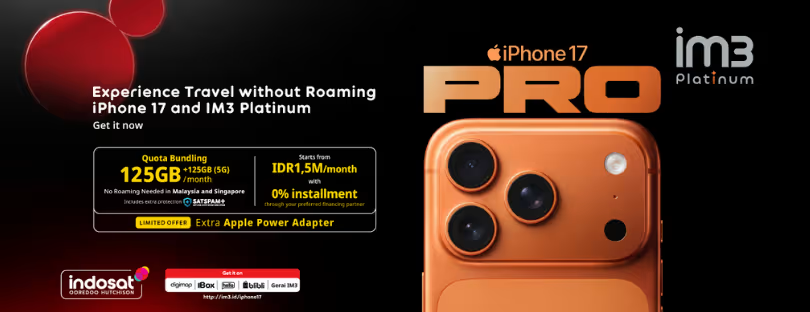
eSIM and the future of connectivity
An eSIM, or Embedded SIM, is a type of SIM card that is built directly into a device such as a smartphone or a tablet. Unlike traditional SIM cards that are physically removed and replaced, eSIMs are programmed remotely and can be activated or deactivated by the user without the need for a physical change. eSIM technology offers several benefits over physical SIM cards, including increased flexibility, improved security, and the ability to easily switch carriers without having to physically change the SIM. eSIM and the future of connectivity
As per Facts and Factors study, The global eSIM market was valued at roughly USD 8.9 billion in 2021 and is predicted to grow to about USD 25.8 billion by 2028, with a compound annual growth rate (CAGR) of approximately 16.42% over the projection period. eSIM and the future of connectivity
eSIM Market: Overview
With the continuous expansion of smart connected electronics in every business sector, the demand for centrally managed web devices is continuously increasing. The requirement for remote connectivity for device management is growing. The number of smart device makers is fast expanding to meet this need.
eSIMs are becoming incredibly popular since they enable customers to manage every connected device remotely, including mobile phones, cars, medical equipment, wearables, and others. Because of their “Machine to Machine” features and remote provisioning, e-SIMs are becoming incredibly common among smart device manufacturers.
An eSIM, also known as an Embedded Universal Integrated Circuit Card (An eSIM, or Embedded SIM, is a type of SIM card that is built directly into a device such as a smartphone or a tablet. Unlike traditional SIM cards that are physically removed and replaced, eSIMs are programmed remotely and can be activated or deactivated by the user without the need for a physical change. eSIM technology offers several benefits over physical SIM cards, including increased flexibility, improved security, and the ability to easily switch carriers without having to physically change the SIM. ), is a universal integrated circuit card (UICC) in a generic form. It functions similarly to a normal SIM card. It has pre-programmed settings and can be programmed by plugging the card into a modem or computer.
The eSIM was created for the telecommunications sector, primarily for network-attached storage installations (NAS). The principal application of eSIM is in the mass manufacture of Microsemi transistors and other embedded communication devices. There are various manufacturers that support eSIM-based cards. eSIM manufacturers provide support for eSIM by providing hardware and software updates and upgrades, as well as their own line of e-SIM cards. eSIM is used in a wide range of networking devices, including laptop computers, digital cellular phones, modems, desktop computers, distribution equipment, wireless personal area networks, fax machines, printers, and many others.
Key Insights:
- As per the analysis shared by our research analyst, the global ESIM market is estimated to grow annually at a CAGR of around 16.42 % over the forecast period (2022-2028)
- In terms of revenue, the global ESIM market size was valued at around USD 8.9 Billion in 2021 and is projected to reach USD 25.8 Billion, by 2028.
Industry Dynamics:
Global eSIM Market: Growth Drivers
- The increasing popularity and M2M application are boosting the market’s growth.
Remote provisioning means the capability to download an operator account to an in-market SIM and alter or delete subscriber identity module (SIM) identities without physically accessing the SIM card. The eSIM card is a key facilitator for machine-to-machine (M2M) connectivity, which includes seamless and simple mobile connections for all types of linked devices. M2M requires the widespread networking of machines across geographical areas. Embedded SIM eliminates the hassle of switching service providers, resulting in increased operational excellence, and runs in a controlled and safe environment. The most recent embedded SIM cards provide ensured profile interoperability as well as a key platform for participants to collaborate on common grounds. All these factors are likely to boost the growth of the global eSIM market in the near future.
Global eSIM Market: Restraints
- Increasing security threats can hinder the market’s growth.
As technology advances, IoT device penetration increases, and M2M services proliferate, it becomes increasingly critical to provide safe and dependable communication among linked systems. As a result, ensuring the integrity of these systems has become a difficult effort. By offering automatic compatibility across connectivity platforms and different SIM operator profiles, embedded SIM cards enable the remote provision of SIM profiles. However, if security were compromised, the operational flexibility provided by an integrated SIM would be a waste of time. The e-SIM captures and maintains mobile network operator (MNO) credentials in the device’s inbuilt software, which is vulnerable to different security breaches. It also uses various mobile network operators and physical systems, exposing it to the hazards of the virtual world.
Global eSIM Market: Opportunities
- Growing demand for smart solutions can bring considerable growth opportunities.
Smart solutions, such as smart cities, electric vehicles, and smart meters, are becoming more popular around the world as a result of the IoT infrastructure’s flexibility and connectivity, as well as the accelerated drive for smart cities and economic growth in emerging nations. The progression and advancement of networks, the lower cost of devices such as actuators & sensors, and the rise of new marketing strategies are some of the major elements that will lead to the establishment of services such as automatic security systems, smart grid deployment, connected cars, and many others, resulting in increased investment opportunities in implementing creative smart solutions. As a result, the increased need for efficient technologies for a variety of applications in industries like energy & power, healthcare, agriculture, and automotive is projected to open up new opportunities for the global e-SIM market participants.
Global eSIM Market: Challenges
- Inadequate standardization remains a challenge.
The e-SIM business model is quite complicated, including numerous stakeholders. As a result, stakeholders must coordinate and collaborate to establish standards for efficiencies, interoperability, and cloud technology such as M2M communications and widespread sensor systems for the better execution of integrated SIMs across a wide range of applications. To address the issue of lack of standardization and ease industry-wide adoption of eSIM, international organizations such as the GSM Association (GSMA) and the European Telecommunications Standards Institute (ETSI) are working to develop technical and operational standards.
Global eSIM Market: Segmentation eSIM and the future of connectivity
- The global eSIM market is segregated on the basis of use, component, and region.
By use, the market is divided into laptops, smartphones, M2M, tablets, connected cars, and wearables. The M2M segment is anticipated to account for the majority of the eSIM market during the projection period due to the numerous benefits provided by the application of eSIM in M2M devices, such as a simplified and efficient approach with no need to replace or insert a SIM card, enhanced security and reliability, a modern look, and no connector requirement. Furthermore, e-SIM provides efficient operation and smooth connectivity of M2M modules that are often hermetically sealed and located remotely.
By component, the market is divided into energy & utilities, manufacturing retail, automotive, transportation & logistics, and consumer electronics. The consumer electronics segment continues to be a significant driver of change, innovation, and growth in a variety of technology areas. Consumer electronics applications based on E-SIM are expected to revolutionize the industry. Enhanced connectivity, excellent reliability, and better safety are just a few of the benefits of using e-SIMs in consumer electronic applications.
List of Key Players in the eSIM Market:
NXP Semiconductors N.V.
Gemalto NV
Infineon Technologies AG
Giesecke+Devrient Mobile Security GmbH
ARM Holdings
KORE Wireless Group Inc.
Deutsche Telekom AG
STMicroelectronics
Here are some indicative prepaid eSIM card prices:


















